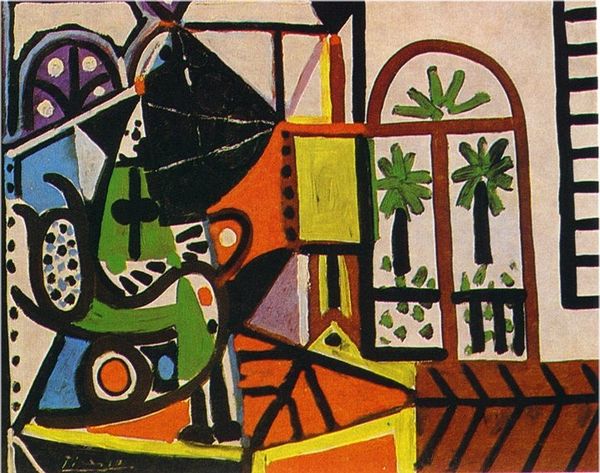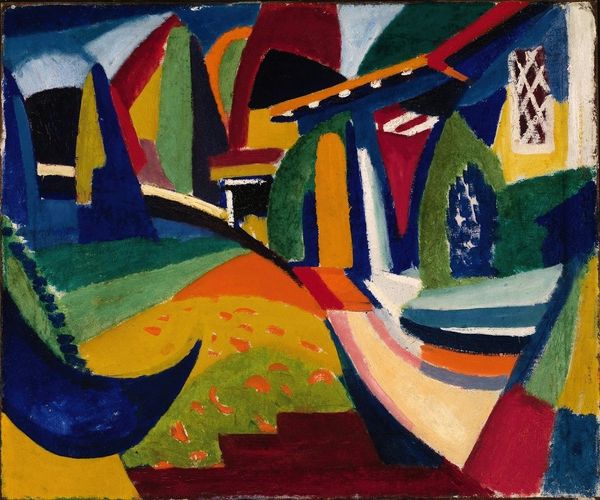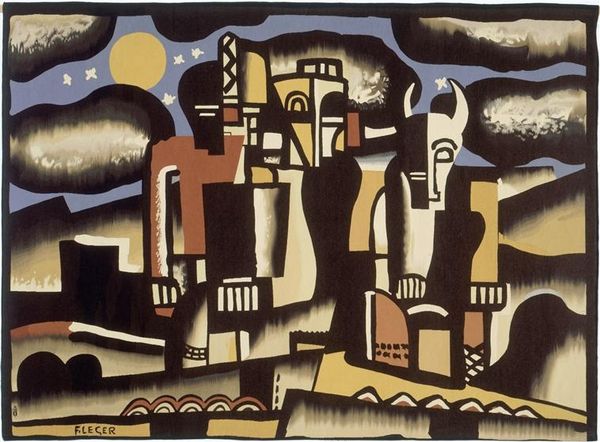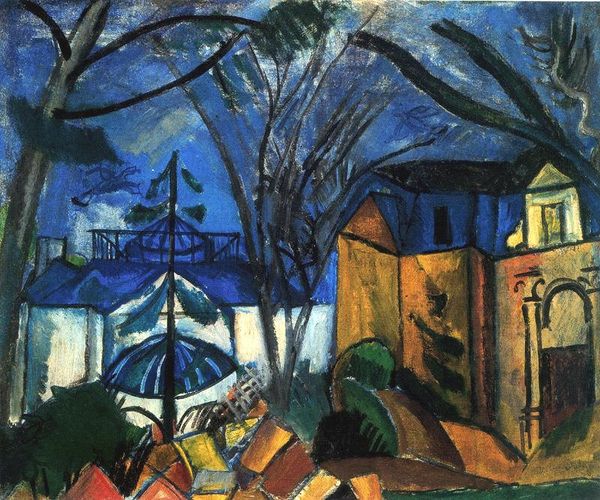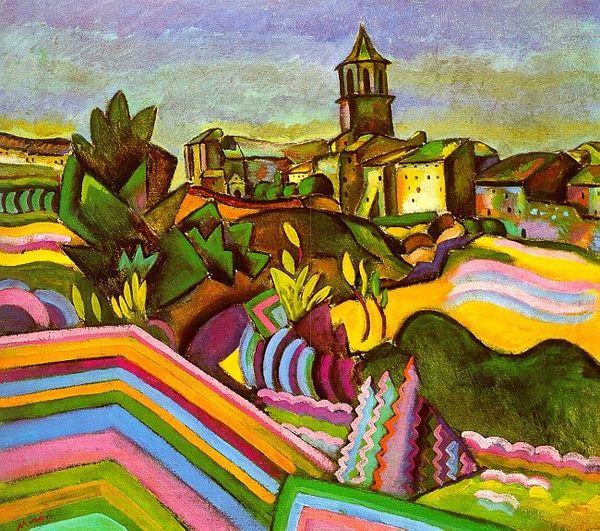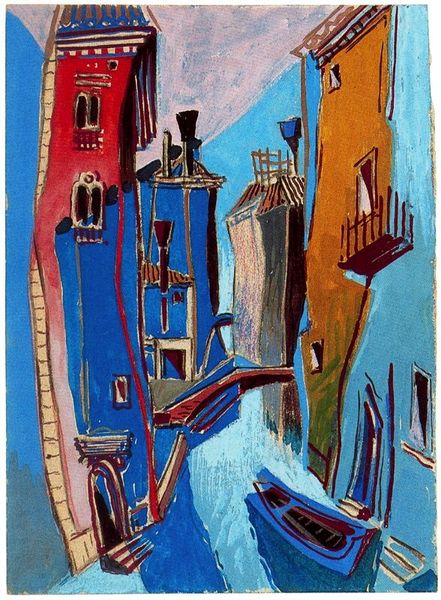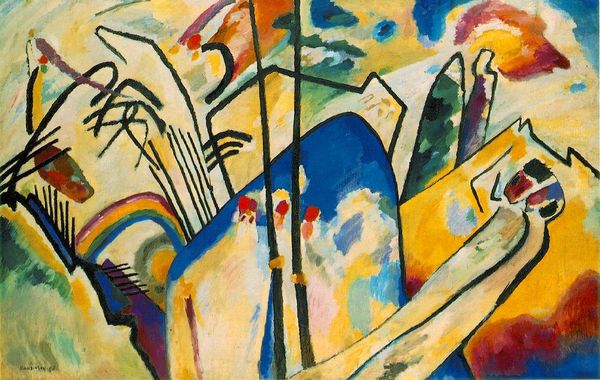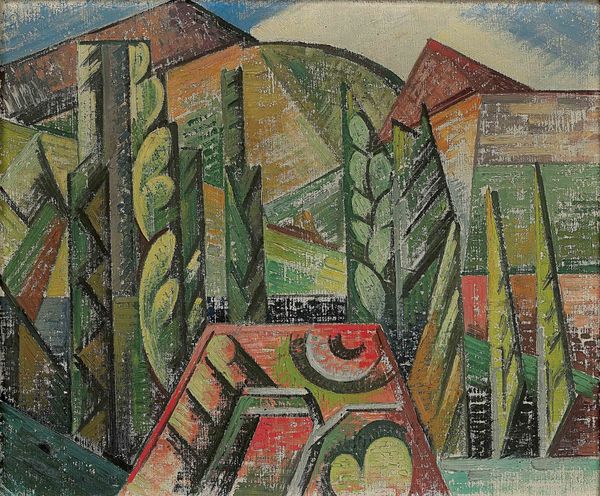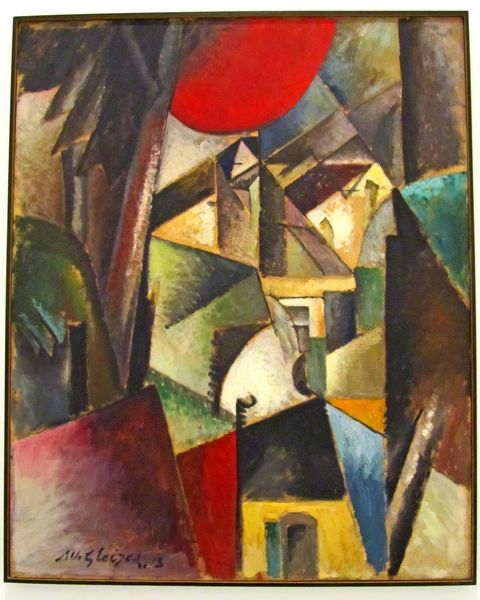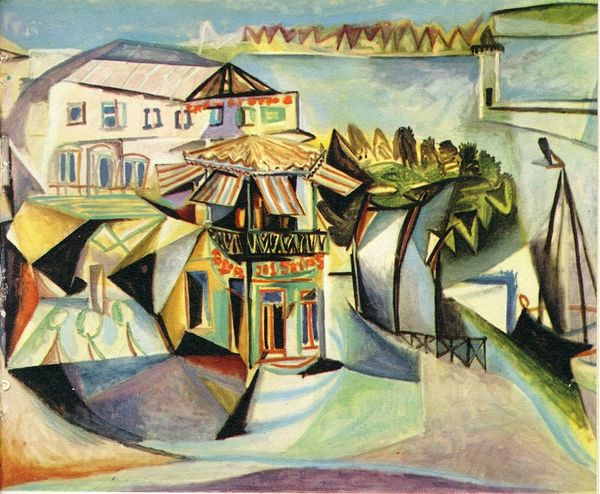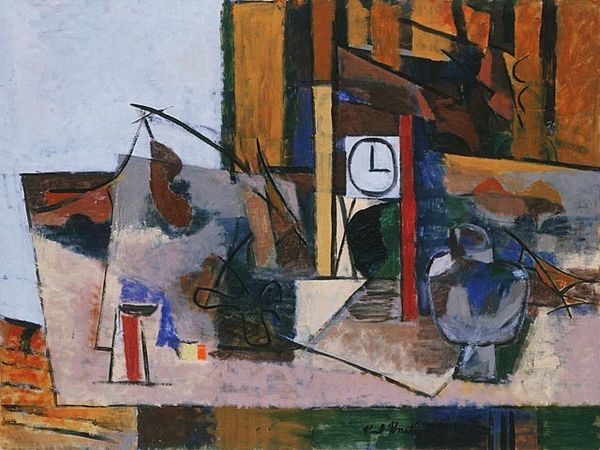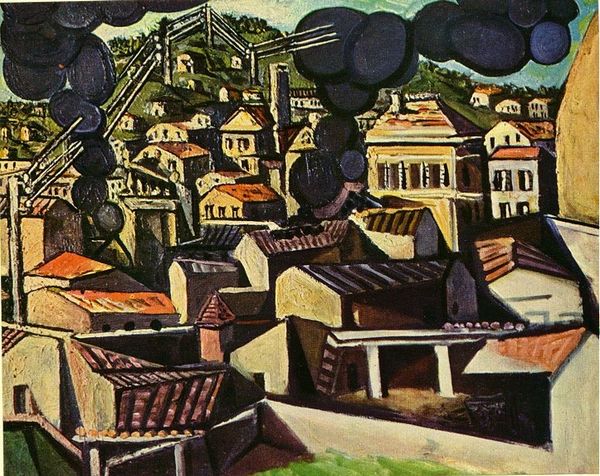
painting, oil-paint
#
cubism
#
boat
#
popart
#
painting
#
graffiti art
#
oil-paint
#
landscape
#
pop art
#
geometric
#
abstraction
#
modernism
Dimensions: 81 x 125 cm
Copyright: Pablo Picasso,Fair Use
Editor: So this is Picasso’s "Mediterranean Landscape" from 1952, rendered in oil paint. It's such a vibrant scene. It reminds me a little bit of graffiti art due to its bold shapes and vivid colors, while still giving a definite sense of place. What's your take? Curator: Well, when viewing Picasso, it's essential to consider his positioning within art history and the societal role that played into the development and popularization of his work. "Mediterranean Landscape" arrives relatively late in his career; he's already a household name. Does this reputation perhaps influence our immediate acceptance of its distorted perspective? Would a similar piece from an unknown artist receive the same attention, the same level of assumed depth? Editor: That's a good point. Do you think the context of post-war Europe also influenced the visual language he used? The slightly fractured feel maybe suggesting a world pieced back together? Curator: It certainly could. Picasso's Cubism already demonstrated a fracturing of perspective. Here, in the post-war era, with the rise of mass media and its increasing saturation within society, the art world became both more democratized and commercialized. Therefore, to reach a broader audience, what kind of visual punch would it take to catch their attention? Would accessibility perhaps require that it have legible form rather than solely complex and hidden artistic references? Editor: So the recognizable, yet still abstracted, landscape and boat help to ground it? Curator: Precisely! Now, what is interesting to note about this 'recognizable' scenery? How is this "Mediterranean Landscape," as constructed in the 1950s by the famous artist, influencing or reflecting the average European’s idyllic view of the region as it slowly recovered, in reality? Editor: Wow, I hadn't thought of it that way! It is definitely much more than a painting of the Mediterranean; it's kind of a social statement about art and perception. Thank you! Curator: Indeed, looking at art through a historical lens allows us to question those accepted 'truths,' revealing the complicated interaction between art, its patrons, and society itself.
Comments
No comments
Be the first to comment and join the conversation on the ultimate creative platform.
